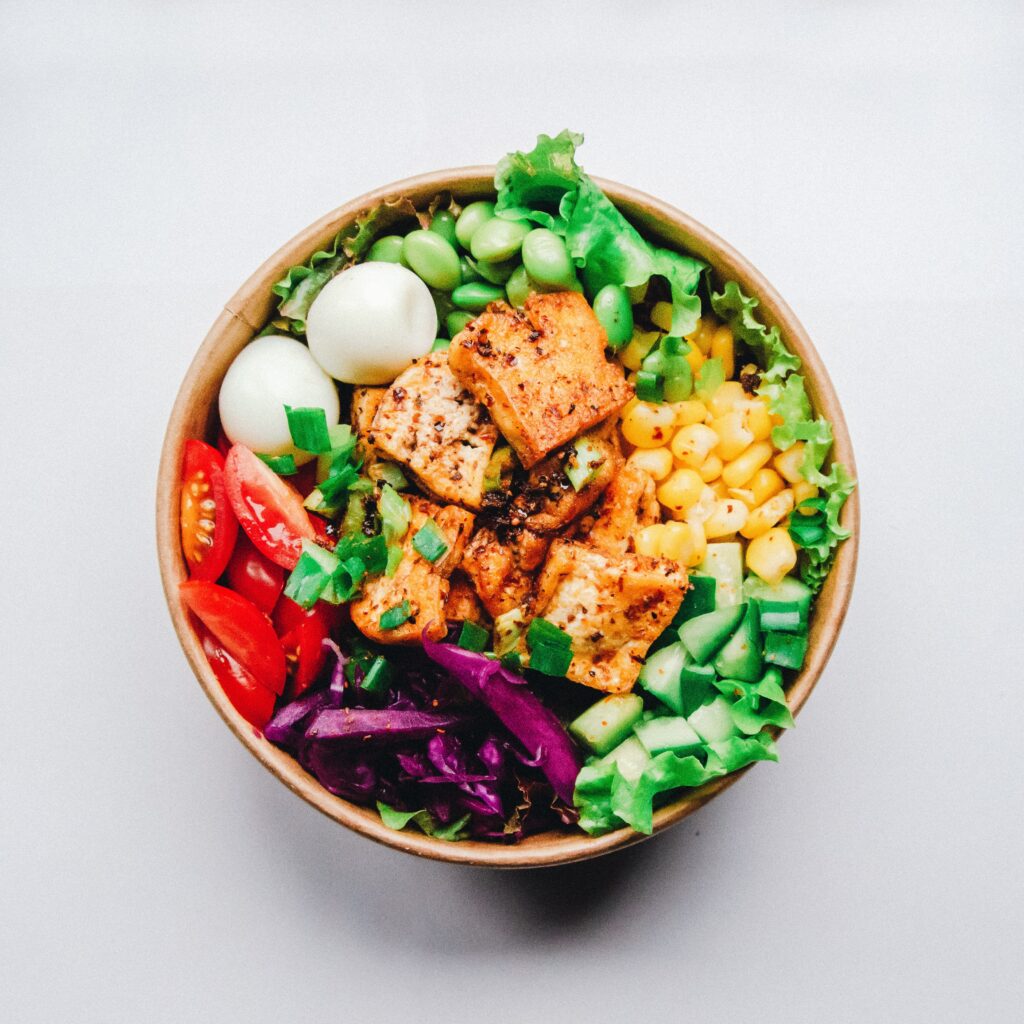Menu planning can be tough, especially for first time moms or first time wives. But even for some moms who have been cooking for their family for years, it’s still a struggle to always think of the next meal to cook. Creating a weekly menu plan is a big help for eliminating stress and speeding up meal preparation. With a menu plan, you can make things hassle-free, rather than rummaging to the fridge then rushing to the store if there’s some ingredient missing.
Benefits of Creating a Meal Planning Notebook
1. Saves time
The whole process of thinking and planning out the meals you’re going to eat for the day may seem like a difficult thing to do every day. So if you plan your meals for the week ahead of time, you can see the time saved that will be otherwise spent by thinking for every meal, then going to the store to buy ingredients you don’t have. It’s better to take an hour to sit down and do all the meal planning than go through the week having multiple grocery store trips.
2. Saves money
When you make a menu plan, along it comes making a grocery list. Going to the store once will result in fewer temptations and less impulse purchases. Otherwise, you may be going to the grocery store to buy just a few missing ingredients but end up with a full bag of groceries because you craved what you saw.
3. Gives you a chance to eat smarter
If your meals are unplanned, it’s highly likely for you to simply order takeout once you have to make a decision at the last minute. But if you plan it ahead of time, you can make sure that your family is eating an appropriately varied diet – it may not be always balanced, but the good thing is it’s varied. With a planned menu, you can make sure that they are getting fruits and veggies, as well as whole grains and proteins. Making a weekly menu plan allows you to improve the nutrition of your household.
Tips for Creating a Menu Planning Notebook
There are big advantages to creating a menu planning notebook, but you may not know how to start. Here’s some helpful tips to create menu plans:
1. Have a list of trusted recipes
Menu planning isn’t the time to try a bunch of new recipes you saw on Tasty or Pinterest. You will want to start with your tried-and-tested recipes that your family already loves. It’s also a good idea to ask for their inputs and ideas as well. Like for instance, they may want a certain meal to be cheesier or spicier, so you can adjust your recipes and your grocery list.
2. Sort the recipes by its proteins
Even avid fans of chicken can get tired of eating it for dinner all week. Try to serve chicken, fish, beef, pork, or any source of protein you may want. You can also add meatless meals. Then, alternate the proteins so people are not eating the same thing two nights in a row.
3. Check what you already have
Check your fridge, freezer, cupboards, and pantry to see what ingredients you don’t need to buy. If you have many stocks, it’s best to build your menu plan off of those. For example, if you have a lot of uncooked pasta, then you may want to plan a pasta dish and list all the other ingredients of a certain dish you want to cook.
4. Make a list
Write down the meals you want to serve, then make a list of all the ingredients required for the dish. Don’t forget to list the spices and condiments included. Consolidate as you write, so instead of listing a cup of rice on three different times, you can simply list three cups of rice, to make it easier to write your grocery list.
5. Swap in a new recipe per week
Once you already got used to the process of planning, preparing and cooking your meals, you may want to swap in a new recipe for the weeks to come. Since you achieved a level of mastery for your family’s well-loved meals, you may want to try new recipes you’ve seen online. Swap it out for one of your meals on the master list.
6. Cook once, eat twice
You can speed up the dinner preparations by cooking food you can use in two separate dinner. For instance, you may roast a chicken for dinner one night, then use the leftovers to make chicken noodle soup the next day.
7. Depend on the seasons
Buy what’s in season to get the most of your money. Sometimes, if a recipe calls for an ingredient that’s out of season, maybe ditch it and replace it with a recipe with a more in-season component.
Different Menu Plan Formats
There are different ways in which you can write a menu plan in a notebook in a weekly format. A weekly format is the most organized and efficient format to write a menu plan with, so you can easily see the variety of meals all throughout the week. In your template, just make sure that you allot a space in which you can write “for the week of,” with all seven days listed on it.
Detailed weekly meal planning with grocery list
This is a meal planning template with a vertical orientation of the days of the week on the left half of the page. Add lines for you to list the breakfast, lunch and dinner menu. Meanwhile, put a grocery shopping list on the right half of the meal planner where you can write down the needs for your next grocery run. Add the date of the week so there will be no confusion as to whether this meal plan is up to date or not.
Horizontal weekly meal planning with grocery list and snacks
This is a horizontal type of meal planner with the days of the week listed down at the left-hand side, and breakfast, lunch and dinner creating the columns needed to plan out your meals. Also, add a grocery list column on the far right-side to make it easy to plan for the weekly grocery trip.
Weekly meal planning with grocery list
If your family skips breakfast or doesn’t eat a certain meal, you can skip the lined meal plan and write it in a more flexible column. For this one, create a horizontal setup of the days of the week starting at Monday to Friday. Then on the bottom, separate the weekends and provide a larger space, because you may have more time to create delicious meals on the weekends rather than weeknights. In addition to these larger blank spaces for the days of the week, add a grocery list space on the right side.
Weekly meal planning with blank space
This is a horizontal planner that lists the days of the week horizontally, then the menu for breakfast, lunch and dinner follows vertically per day. Then, the entire bottom section of the notebook is left blank to give space for requests, goals, notes, reminders, grocery list and more.
Weekly meal planning with blank notes section and requests
Vertically, list the days of the week on the left-hand side. Allot space in between to write three meals your house eats on any given day. Add a blank notes section on the right side for reminders, goals, and anything else that has to be written down. Also, add a requests section to add what your other family members have requested for the week.
Weekly meal planning with blank columns
This is a horizontal meal planning template with all seven days listed on the left side, with spaces underneath for listing the menu for each day. Then, add two full columns on the right side for grocery lists, reminders, and other things that needs to be written down.
Things to Consider for a Cheaper Menu Planning
1. Food Cost
It is important to account for household expenses to see where most of the budget goes. Further, it becomes the basis for making a friendly budget cut when needed. One of the biggest household budgets is food. In menu planning, accounting for the cost of ingredients will give you a clearer view of what menus are budget-friendly and what food menu you can cook occasionally. It’s also important to ensure you have the kitchen utensils to prepare your meal, as this may add to the menu planning budget.
2. Availability of the Ingredients
When planning your menu for the week, ingredients’ seasonality can help the flow of expenses. You may also use all-year-round ingredients for your dishes and even get creative for the next meal while still using the same ingredients. If you are planning for a week of menu preparation, set a schedule to check the ingredients’ price ranges in the nearby markets and grocery stores. This process will help you get an estimated cost of how much you will be spending for the entire week.
3. Quantity of Meals
The menu planning changes depending on the type of meal, the number of dishes to cook, and the number of family members who will be eating. For example, if a budget-friendly breakfast has to be planned, it’s a good idea to know those family members who usually stay for breakfast and those who wish to have it outside. Budgeting the quantity will save a considerable amount of dishes based on how many people will eat exactly.
4. Quality of Meals
Your grocery shopping budget will affect the types of recipes you choose and the right foods you buy to prepare your meals. While keeping the budget on track, it is still important to consider the value of healthy nutrients your family gets. For example, suppose you plan to have drinks and dessert. In that case, choosing a banana milkshake or banana smoothie over a strawberry milkshake or smoothie is a good idea, as bananas are cheaper and way more nutritious than strawberries. Also, plain yogurts can be chosen over flavored yogurts to save money and have a healthy breakfast.



